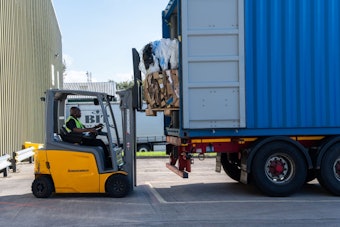As companies become increasingly connected in the global economy, they now have supply chains—or “value streams”—that span international borders. Consumption habits of people have also changed. Many are using e-commerce sites to have their purchases delivered to their doorstep. These changes have caused a surge in the use of small-parcel delivery services, especially here in the United States. As a result, companies are under increased pressure to ensure that their product reaches its destination without damage.
Research at Cal Poly compared methods for evaluating how the transportation segment of a supply chain affects product quality. Traditional physical distribution analysis, which examines the frequency distribution of drop heights for a package during a transportation segment, has been extensively published. Although informative on the potential for damage during a particular segment and improvements to packaging, this type of data lacks prescriptive power on time and location in the value chain and the potential for improvements to handling and value chain design. Extended value stream mapping examines time and location information in analyzing value chains that is useful in design and improvement, but often lacks detailed information on quality between nodes in the value chain.
Our research sought to remedy the shortcomings in both approaches by providing three alternative methods to more directly compare transportation segments of value chains:
- Total-energy (potential energy (joules) = mass of package x acceleration due to gravity x height): The total-energy method is a helpful tool in evaluating value chain quality because an absolute quantitative value can be assigned to each transportation segment since energy can be summed and drop heights cannot.
- Energy-time (joules per minute): The rate of energy absorption per minute could be used to identify changes to a value chain route or carrier to minimize damage in transit time.
- Energy-distance (joules per mile): An energy-distance profile can be created as an aid to locating and reducing high potential damage sections of a value chain. The reduction of total distance traveled is a lean approach for reducing inventory and conveyance waste.
These methods were demonstrated and compared using data collected with Lansmont’s SAVER™ 3X90 data recorders packed in boxes and shipped between San Luis Obispo, CA and East Lansing, MI via 2nd Day Air freight using three different carriers: FedEx, UPS, and the USPS. Two round trip journeys (4 legs total) for each carrier were conducted. The data collected were limited to drop heights that the packages experience while en route and was applicable only to the transportation segment of the extended value stream. Information from the data recorders was matched to tracking information provided by the carriers.
Results of the study can be obtained by emailing the authors.

























